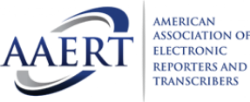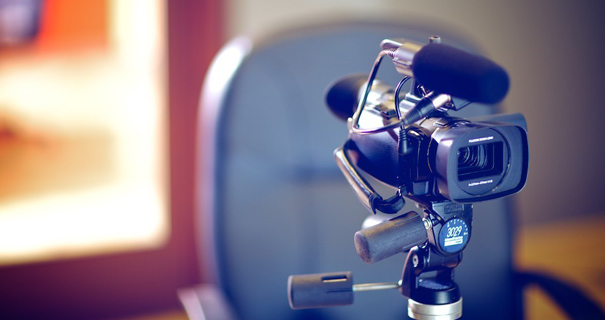How Effective Trial Discussions Can Win Your Instance
The performance of trial discussions is usually ignored, yet they play an important function in shaping juror understandings and affecting instance results. By comprehending the target market and crafting a narrative that resonates on both intellectual and psychological levels, attorneys can considerably improve their persuasive power. Moreover, the calculated use of visuals and improved delivery strategies can elevate the clarity of complex details. As we discover the components that add to an engaging test presentation, the concern continues to be: what specific strategies can lawyers employ to guarantee their message not just reverberates but also urges action?

Understanding Your Target Market
Recognizing your target market is important for providing a reliable trial presentation. Understanding that will exist in the courtroom-- jurors, courts, and rival advise-- allows you to customize your message in a manner that reverberates with them. Each team has distinct expectations, biases, and backgrounds, which can considerably affect their assumption of the situation.
For jurors, it is important to consider demographics, life experiences, and cognitive biases. Jurors might originate from numerous professions and social backgrounds, influencing their analysis of proof and debates. Engaging with them with relatable instances and clear, uncomplicated language can cultivate much better understanding and empathy.
Judges, on the various other hand, concentrate on legal standards and procedural integrity. Presentations must be concise and grounded in the regulation while respecting court etiquette. Understanding the court's preferences and previous judgments can further boost your approach.
Efficient interaction rests on acknowledging these differences and adjusting your discussion style accordingly (trial presentations). By expecting the audience's responses and resolving their problems, you can produce a more persuasive story that mesmerizes focus and advertises desirable results
Crafting an Engaging Story
A well-crafted story acts as the backbone of an effective trial presentation, directing the audience with complicated info while stimulating emotional actions. This narrative needs to begin with a clear and appealing introduction that sets the stage, describing the key motifs and problems at stake. Developing a relatable lead character-- frequently the client-- can develop an individual connection with the jury, drawing them right into the tale.
The body of the story need to offer the realities in a sensible sequence, weaving with each other evidence and statement to build a natural debate. Each item of info ought to support the overarching style, reinforcing the wanted message without overwhelming the audience with unneeded information. Shift phrases can be especially effective, assisting to keep flow and keep the jury involved.
Eventually, the verdict ought to reverberate mentally, summing up the case's significance and advising the court to act through their verdict. By crafting an engaging narrative that is both structured and emotionally powerful, attorneys can properly communicate their case's qualities, making it much easier for jurors to recognize and bear in mind the essential points long Resources after the test ends. This approach not just notifies however additionally convinces, enhancing the likelihood of a positive result.
Using Visual Aids Effectively

Visual help play an essential duty in improving trial presentations, changing intricate information into easily accessible information that jurors can conveniently comprehend. By using graphes, graphs, representations, and multimedia elements, attorneys can clarify detailed factors and keep jurors' focus. Visual help help with the understanding of evidence, making abstract ideas tangible and relatable.
When choosing visual help, relevance and simpleness are vital. Each visual must directly sustain the instance narrative and strengthen vital arguments without overwhelming the customer. Overly complicated visuals can interfere with the message, creating confusion as opposed to quality.
In addition, the critical positioning of visual aids throughout discussions is necessary. They need to be introduced at turning points to highlight vital proof or to illustrate considerable modifications or fads. This timing allows jurors to this page process details properly, enhancing retention and recall throughout deliberations.
Moreover, it is vital to make sure that visual help are technologically compatible with the courtroom atmosphere. Experience with the equipment and a back-up strategy can stop technological problems that may disrupt the circulation of the presentation. In summary, efficient use aesthetic aids can dramatically boost a test presentation, bring about a stronger connection with the court and a more convincing situation on the whole.
Engaging Emotion and Compassion
While offering factual proof is necessary, appealing feeling and empathy in test presentations can exceptionally affect jurors' assumptions and decisions. Jurors are not simply decision-makers; they are human beings that react to narratives that resonate on an individual degree. By weaving emotional aspects right into the presentation, lawyers can produce a link that goes beyond simple data and legal jargon.
Narration is an effective device in this context. By presenting the case as a story that highlights the human effect of the occasions in concern, attorneys can stimulate feelings of concern, anger, and even are afraid - trial presentations. These emotions can dramatically guide jurors, making them most likely to feel sorry for the complainant or defendant

Inevitably, a test presentation that properly engages feeling and compassion can develop a compelling argument that resonates deeply, leading jurors to really feel an individual risk visit this site right here in case, therefore increasing the chances of a desirable verdict.
Exercising Distribution Strategies
Involving feeling and compassion lays a solid structure for test discussions, yet the performance of these aspects pivots on the distribution techniques used by the attorney. Mastering delivery techniques is vital for making sure that the message resonates with the jury. This involves exercising tone, pace, and body language to boost integrity and link with the audience.
Rehearsing the presentation several times enables attorneys to fine-tune their design and identify areas for enhancement. Recording practice sessions can supply important insights into one's nonverbal signs and vocal inflections, assisting to remove disruptive practices. In addition, soliciting feedback from peers can highlight strengths and weak points, assisting further refinement.
Reliable use of pauses can additionally be a powerful method; they allow the court to absorb crucial info and enhance psychological influence. Attorneys ought to likewise be conscious of eye get in touch with, as it fosters trust and involvement with jurors.
Eventually, the mix of practiced shipment methods and the emotional resonance of the discussion can significantly affect the court's assumption, developing a compelling case that stands apart in their minds. The power of well-executed shipment can not be overemphasized in the quest of a desirable decision.
Final Thought
In summary, reliable test presentations are pivotal in affecting juror decisions. An extensive understanding of the audience, coupled with a compelling narrative, fosters engagement and comprehension of intricate concerns. The strategic use visual help enhances quality, while emotional resonance grows compassion and link. Mastering distribution methods further magnifies these aspects, inevitably contributing to a convincing situation discussion. By incorporating these elements, attorneys can significantly raise the possibility of accomplishing a beneficial verdict.